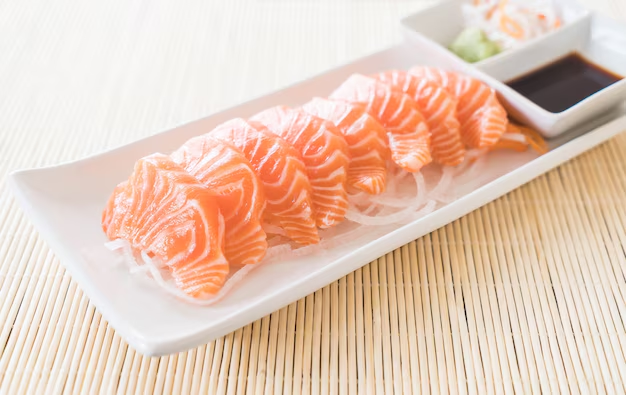How Long Is Thawed Shrimp Good for in Your Fridge? Unpacking Every Fact You Need
Ever found yourself looking at thawed shrimp in your fridge and wondering whether it's still good to eat? You're definitely not alone. Understanding the right way to store shrimp and other seafood is crucial for both flavor and safety. Many questions can spring up: How long does thawed shrimp last in the refrigerator? How can you tell if it's still safe to eat? What are the best practices for storing shrimp? In this article, we'll dive into these questions and offer you practical, clear advice on how to store your shrimp safely and smartly.
The Timeline: Thawed Shrimp in Your Refrigerator
Once you’ve taken shrimp out of the freezer to thaw, the clock starts ticking. Thawed shrimp generally remains safe to eat in the refrigerator for up to two days. This time frame can slightly vary based on different factors, including the freshness of the shrimp at the time of freezing and the fridge’s temperature. Keeping your fridge at or below 40°F (about 4°C) can help ensure that seafood, including shrimp, stays fresh longer.
Understanding the Thawing Process
Before you even place thawed shrimp in the fridge, understanding the thawing process is essential:
Refrigerator Thawing: This is the safest method and ensures that your shrimp remain at a steady, cold temperature. Thawing shrimp in the refrigerator can take 12-24 hours, depending on the quantity.
Cold Water Thawing: If you need your shrimp thawed more quickly, place them in a sealed plastic bag and submerge them in cold water, changing the water every 30 minutes. This method usually takes a couple of hours.
Avoid Room Temperature Thawing: Allowing shrimp to thaw at room temperature can lead to unsafe bacterial growth and should be avoided.
Signs Your Thawed Shrimp Has Gone Bad
You might wonder how you can tell if thawed shrimp has spoiled. Here are some key indicators to watch for:
Odor: Spoiled shrimp often emit a strong, fishy smell. The scent should be mild and slightly salty, like seawater.
Appearance: Fresh shrimp are usually translucent and shiny. If the shrimp has turned opaque or it has any discolorations, it might be best to discard it.
Texture: Shrimp should be firm to the touch. A slimy or mushy texture is a sign that the shrimp has gone bad.
📝 Quick Check-List for Shrimp Freshness
- 🌊 Mild, sea-like smell
- ✨ Shiny and translucent look
- 💪 Firm texture
Proper Storage Techniques for Thawed Shrimp
Storing shrimp correctly is key to maximizing its freshness and shelf life. Here’s how to do it effectively:
Keep It Cool and Sealed
Airtight Containers: Place thawed shrimp in an airtight container or a resealable plastic bag to lock in freshness and block out contaminants.
Cold Zones: Store shrimp in the coldest part of your refrigerator, usually towards the back of the bottom shelf.
Consider Your Placement
Ensure the shrimp are stored separately from other foods to prevent any potential cross-contamination with ready-to-eat items like salads or dairy products.
Beyond Refrigeration: Freezing Shrimp
Sometimes plans change, and you might need to refreeze your thawed shrimp. While not always ideal, refreezing is possible under certain conditions:
Freshness: Ensure the shrimp has been refrigerated and hasn’t been sitting in the fridge for more than a day after thawing.
Proper Freezing: Use heavy-duty freezer bags or vacuum-sealed bags to prevent freezer burn and preserve the shrimp’s quality.
Cooking Your Thawed Shrimp
Once you're confident your shrimp is fresh, it's time to cook! From grilled shrimp skewers to shrimp tacos, there are countless delicious recipes to try. Here are some general cooking tips to ensure your shrimp dishes come out perfect every time:
Cooking Tips
Even Cooking: Ensure shrimp are similar in size for even cooking.
Quick Cooking: Shrimp cooks quickly, usually in 2-3 minutes per side when sautéed or grilled.
Don’t Overcook: Overcooked shrimp become tough and rubbery. Look for them to be opaque and a mild pink for perfect doneness.
Exploring Different Shrimp Varieties
Did you know there's more than one type of shrimp? Each variety offers a different flavor and texture:
Popular Varieties
White Shrimp: Known for a sweet taste, suitable for all sorts of dishes.
Brown Shrimp: Typically offering a more robust flavor, they're often used in complex dishes.
Tiger Shrimp: With a firm texture and mild flavor, these are great for grilling.
Understanding the variety you’re working with can enhance your culinary creations, bringing out the best flavors and textures.
Preparing for Your Next Shrimp Dish
With a clearer understanding of thawed shrimp storage, freshness checks, and cooking techniques, you’re now equipped to make informed decisions about your shrimp dishes. Whether you're planning a casual weeknight meal or an elaborate seafood feast, knowing how to handle shrimp confidently will ensure a delicious outcome.
🔑 Key Takeaways for Thawed Shrimp Storage
- 🕒 Time: Good for up to 2 days in the fridge.
- 🔺 Odor, Appearance, Texture: Use senses to detect spoilage.
- ❄️ Store Properly: In the fridge's coldest section, well-sealed.
- ♻️ Consider Refreezing: If possible, when plans change.
Remember, keeping food safe is about prevention and making informed choices. With seafood like shrimp, freshness is paramount, so don’t compromise. Keep these guidelines in mind, and enjoy your next shrimp meal with peace of mind. Your taste buds—and your stomach—will thank you!
